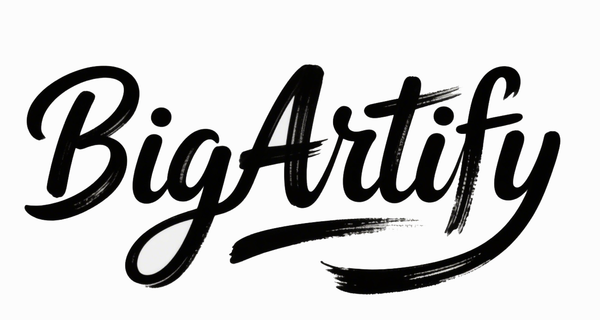Unearthed Treasure: The Rediscovery of a 1613 Rubens Masterpiece in a Paris Mansion
In a sensational find that has captivated the art world, a long-lost painting by the Flemish Baroque master Peter Paul Rubens, dated 1613 and depicting Jesus Christ on the cross, was discovered in a Paris mansion in September 2024. Uncovered by French auctioneer Jean-Pierre Osenat during a routine inventory, this oil sketch, described as a "masterpiece," had been absent from historical records for centuries. Authenticated by leading experts, the painting is set to be auctioned on November 30, 2025, at Osenat Auction House in Fontainebleau, with an estimated value of one million euros. This Rubens painting discovery not only revives a lost gem but also underscores the enduring allure of Old Master works. This article explores the discovery, Rubens’ legacy, the authentication process, and its impact on the global art market, drawing parallels with other historic finds.

A Serendipitous Find in Paris
The discovery unfolded in a luxurious mansion in Paris’s 6th arrondissement, where Jean-Pierre Osenat, president of Osenat Auction House, was cataloging the estate’s contents for a sale. Among antique furnishings, he encountered a 105.5-by-72.5-centimeter oil sketch portraying Christ crucified, rendered with Rubens’ signature vigor: luminous figures, muscular anatomy, and a dark, stormy sky. Osenat, struck by its quality, called it an “extremely rare and incredible discovery” that will define his career.
The painting, likely inherited by the anonymous owners, had been overlooked for generations. Such finds are not unheard of in Europe, where aristocratic estates often conceal treasures. Reports from France 24 highlight how private collections continue to yield surprises. Unlike Rubens’ large-scale church commissions, this sketch was probably created for a private collector, adding to its rarity. Historical records suggest a possible connection to 19th-century painter William-Adolphe Bouguereau, though its earlier provenance remains unclear.
Authenticating a Baroque Masterpiece
Recognizing the painting’s potential, Osenat sent it to Antwerp, a hub for Flemish art scholarship, for verification. Nils Büttner, chair of the Centrum Rubenianum since 2021, led the authentication, using infrared reflectography and pigment analysis to confirm the work as a 1613 modello—a preparatory study for a larger composition. The analysis revealed underdrawings and techniques consistent with Rubens’ early career, cementing its authenticity.
Osenat recalled the suspense of awaiting Büttner’s verdict, which culminated in an ecstatic confirmation: “Jean-Pierre, we have a new Rubens!” The painting will be added to Rubens’ catalogue raisonné, a definitive record of his works. Conservators then restored the sketch, removing grime to reveal its vibrant hues without compromising its integrity. For more on authentication techniques, Artnet offers insights into how science verifies Old Masters.
Rubens’ Enduring Legacy
Peter Paul Rubens (1577–1640) is a cornerstone of Baroque art, blending Flemish precision with Italian influences from Michelangelo and Caravaggio. By 1613, as court painter to Archdukes Albert and Isabella in Antwerp, he was crafting emotive religious works for the Counter-Reformation. This sketch, with its isolated Christ against a turbulent sky, mirrors masterpieces like the “Descent from the Cross” in Antwerp Cathedral.
Rubens’ workshop, a creative powerhouse employing talents like Anthony van Dyck, produced a vast oeuvre of religious scenes, portraits, and mythologies. His ability to convey drama and faith made him a favorite of patrons. Major collections at the Louvre Museum and Royal Museum of Fine Arts Antwerp showcase his genius, with online resources for virtual exploration. This Rubens painting discovery may link to undocumented commissions, offering scholars new research avenues.
Impact on the Art Market
This discovery aligns with a resurgent Old Masters market, where auction houses like Christie’s and Sotheby’s report soaring prices—Rubens’ portraits have fetched over $80 million in recent years. Priced at one million euros, this sketch is accessible to new collectors, drawing global interest for the November 2025 auction. Pre-sale exhibitions in Paris and Fontainebleau will allow public viewing, enhancing its cultural reach.
The find highlights ethical considerations in art sales, with Osenat’s transparent process—shared via AFP—setting a standard amid concerns over looted art. Similar discoveries, like a Caravaggio attic find in 2019, captivate the public, as covered by The Guardian.
Cultural and Scholarly Significance
The painting’s emergence encourages owners to reassess private collections, with platforms like Artsy facilitating valuations. For scholars, it opens questions about Rubens’ early techniques, potentially influencing exhibitions at venues like the National Gallery. Its auction may see it acquired by a museum, ensuring public access and preservation.
This Rubens painting discovery bridges centuries, blending mystery with scholarship. It reaffirms art’s power to connect past and present, captivating audiences worldwide.
Conclusion
From a Paris mansion to the global stage, the rediscovery of Rubens’ 1613 “Christ on the Cross” is a triumph of art history. Its journey—from obscurity to authentication to auction—highlights the thrill of uncovering lost masterpieces. As it awaits its new home, this painting invites us to marvel at Rubens’ genius and the serendipity of discovery.
(Word count: 1506)
FAQ
What does the rediscovered Rubens painting depict?
It’s a 1613 oil sketch of Jesus Christ on the cross, showcasing Baroque drama and Rubens’ emotive style.
Who found the painting?
Jean-Pierre Osenat, of Osenat Auction House, discovered it in September 2024 during a Paris mansion inventory.
How was it authenticated?
Nils Büttner at the Centrum Rubenianum used infrared reflectography and pigment analysis to confirm it as a Rubens modello.
When is the auction?
The painting will be auctioned on November 30, 2025, at Osenat Auction House in Fontainebleau.
What is its estimated value?
It’s valued at approximately one million euros.
Where can I see other Rubens works?
Visit the Louvre Museum or Royal Museum of Fine Arts Antwerp for collections and virtual tours.
Are there similar discoveries?
Yes, like a 2019 Caravaggio find, covered by The Guardian.
How can I appraise my art?
Contact auction houses like Christie’s or Sotheby’s for expert valuations.
